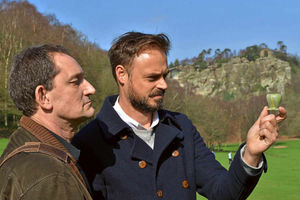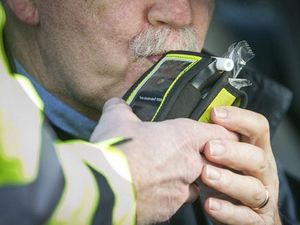Holy Grail trail moves on from Shropshire find
Shropshire's claim to be the home of the Holy Grail – the cup of Christ – comes under scrutiny in a new book which claims to have tracked down the location of the goblet.

Kings of the Grail is the culmination of a three-year investigation by leading academics.
It includes a look at various chalices which have been put forward as claimants to be the real-life Holy Grail, including The Hawkstone Grail in Shropshire.
Last year TV presenter Jamie Theakston and a film crew making a programme about the Holy Grail came to the county to investigate.
Grotto
In 1920 a cup was discovered inside a statue in the grotto at Hawkstone Park and a historical detective, Graham Phillips, argued that it could be the Marian Chalice – the historical grail, of which King Arthur was the appointed guardian.
According to the new book, the use of the Hawkstone Grail as a chalice has been ruled out because it is too small, the size of an eggcup.
However, it has been evaluated to be an antique and possibly even of Roman origin.
The authors, though, ultimately look to Spain for the answers. In trying to unravel the legend, they have uncovered previously untranslated documents from the Al-Azhar Library in Cairo.
And they say that the Chalice of Dona Urraca in the basilica of San Isidro in Leon, Spain, is the authentic goblet from the Last Supper.
They document the goblet's centuries in Jerusalem before the Grail was gifted to Ferdinand I, King of the Spanish territory of Leon, by the Islamic Emir of Denia. As for the Hawkstone Grail, the book says the current owner is a graphic designer named Victoria Palmer, who is the great-granddaughter of Walter Langham, a local dealer who at the beginning of the 20th century acquired some statues from Hawkstone Park.
As the items were being moved, the book says, the cup fell from a secret compartment hidden in one of the statues.
It was this cup that author Graham Phillips took to the British Museum.
It was identified as a Roman-style ointment or scent jar, probably dating from the first century AD.
The material – green alabaster, also known as onyx – was popular at that time in the area of Palestine, where Jesus lived and preached during the first century.
Mr Phillips concluded that the Hawkstone cup could have originated from the right place and the right time to have had some association with Christ.
However, because of its tiny size he thought it was not the Holy Grail, but instead another relic associated with it.





